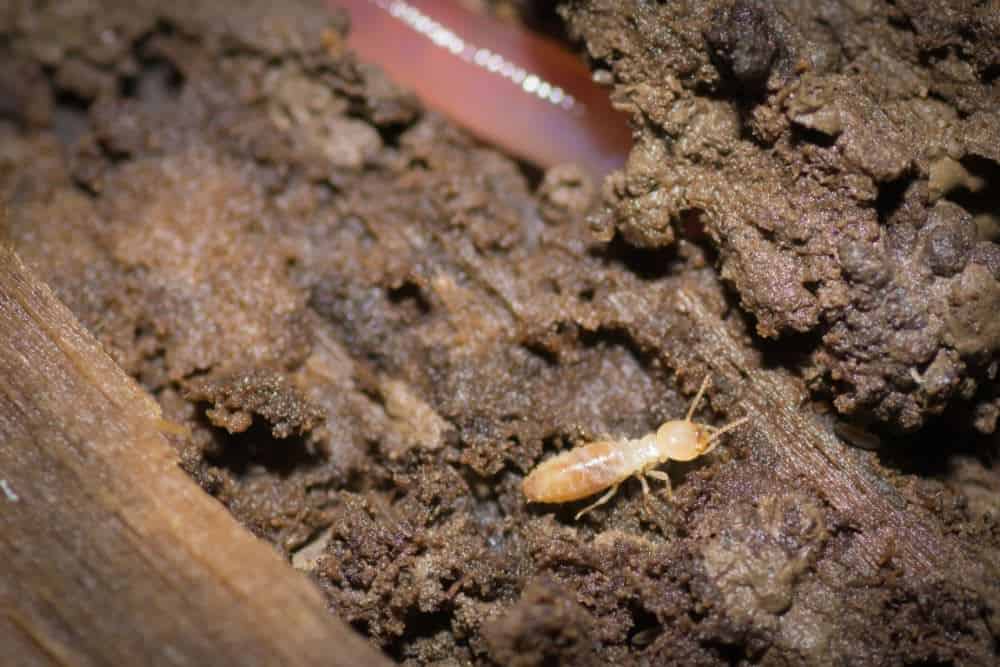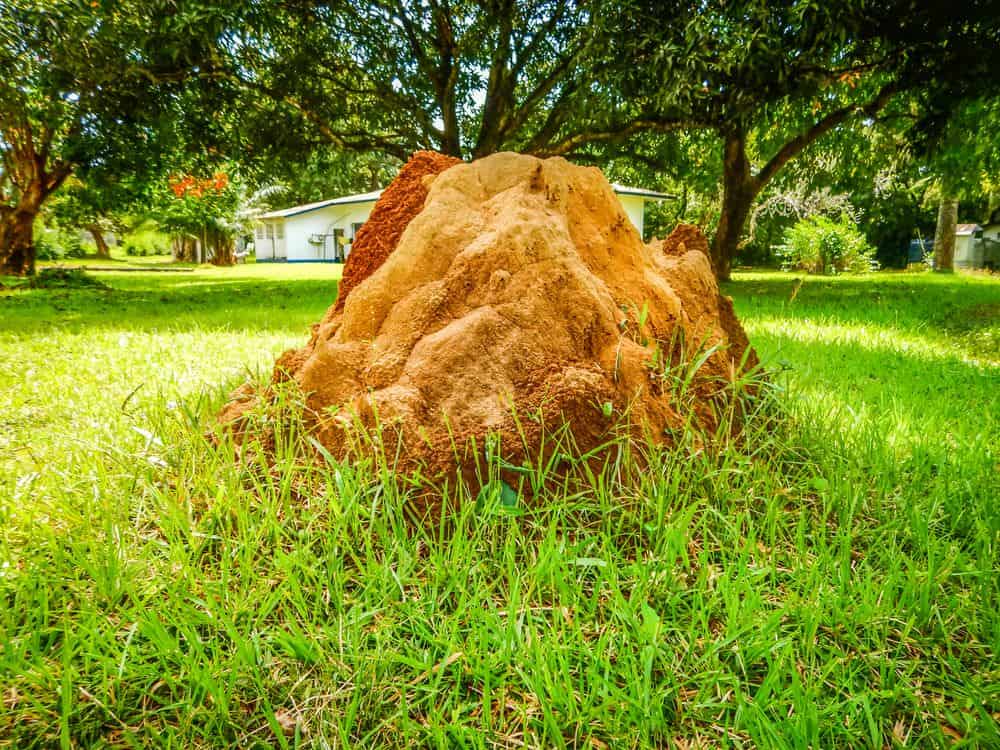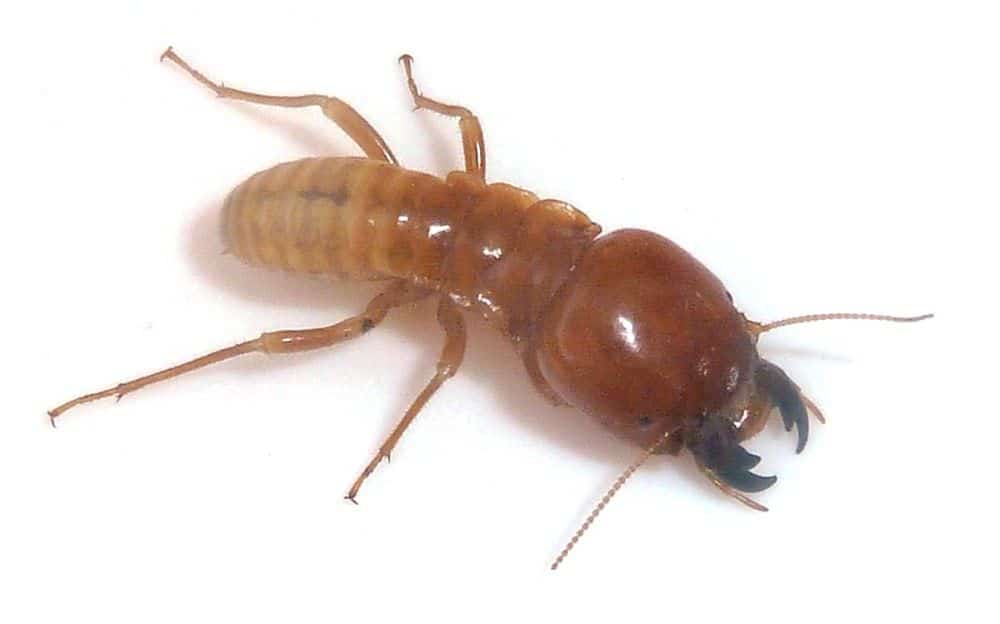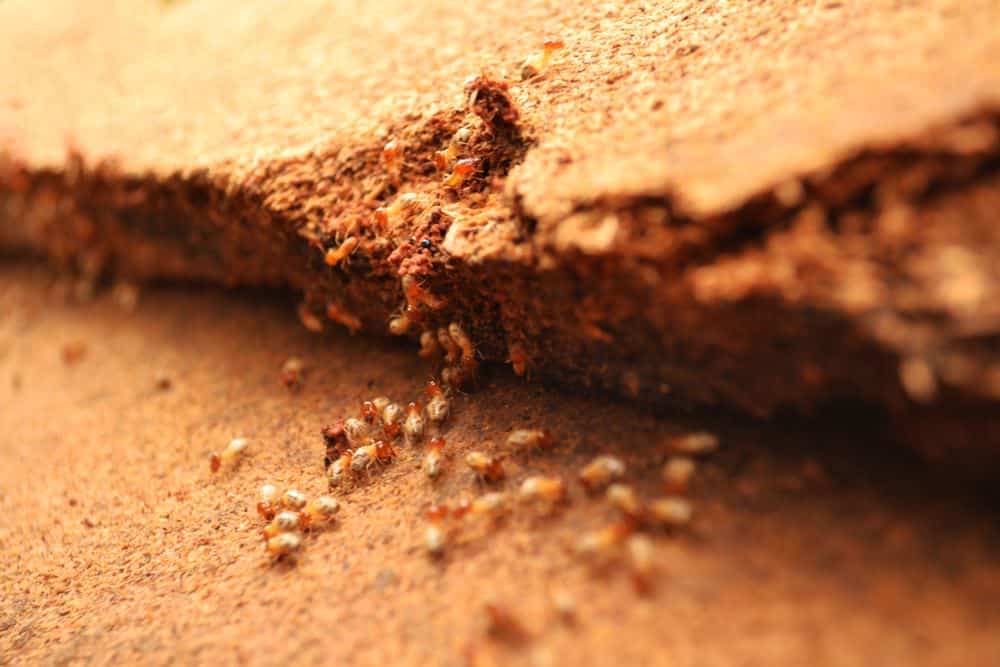What Does A Termite Look Like?
Termite identification is a useful skill to have as it will enable you to differentiate between them and other insects. If you find and identify termites in your home, you can then act quickly to combat a potential infestation.
In this article, you will learn all you need to know about recognizing termites. You will also discover what insects resemble termites. Lastly, I will cover what you should do if you are unsure about a potential termite crisis on your hands.
How Big Are Termites?
Termites are sociable creatures and live in colonies. Their caste structure separates termite communities into various groups, with differing functions. The size of a termite depends on age, species and more, which we delve into below.
Eggs, Larvae & Nymphs
Once the eggs hatch, termites are insects that develop through molting. This is when a termite sheds its exoskeleton and grows larger, developing gradually. Larvae and nymphs are the first two developmental stages (or instars) a termite passes through.
Termite larvae are not true larvae, as with mosquitoes or fleas. A true larva looks like a miniature worm. It forms a chrysalis or pupa before emerging as an adult. Termite larvae resemble smaller versions of adult termites.
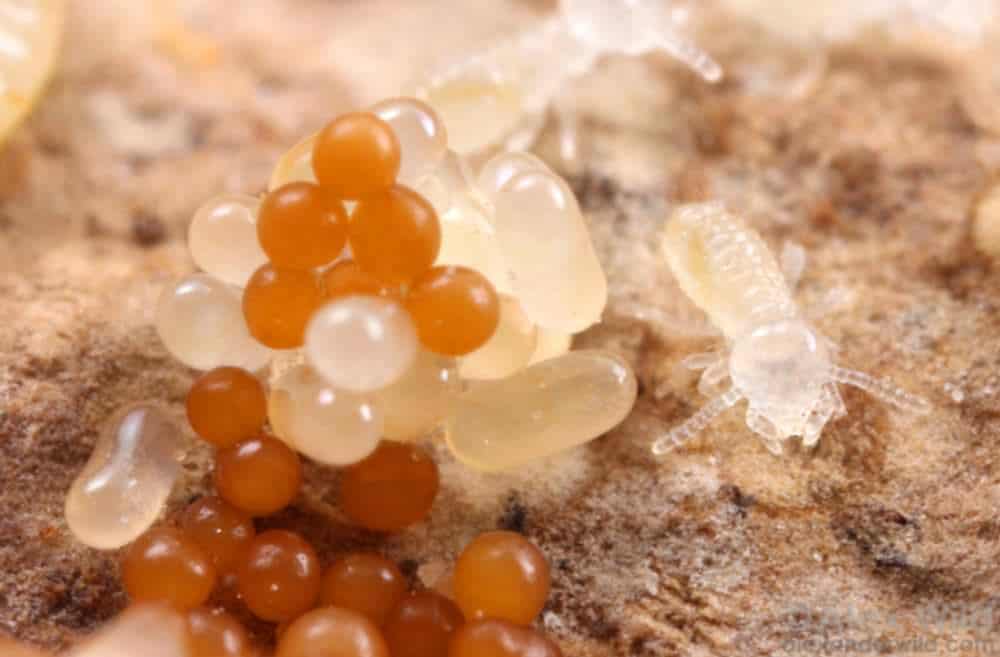
Once a termite molts and develops wing buds, it is considered a nymph. Wing buds are spots on the nymph’s back where wings will grow in. Nymphs resemble immature, smaller versions of adult termites and the average nymph is less than a tenth of an inch long.
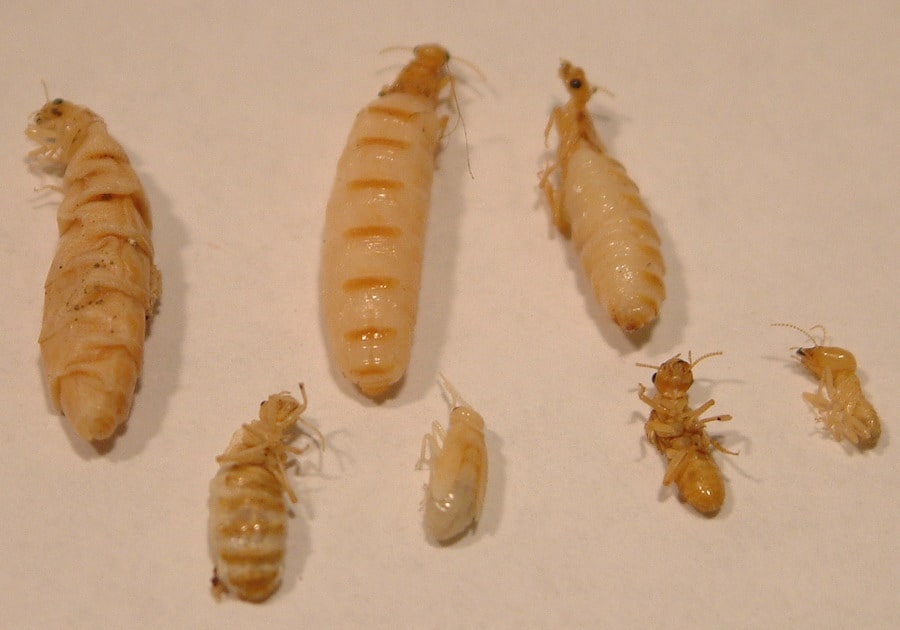
Workers
Worker termites are among the most populous members of the colony. They are responsible for all the laborious chores in termite society, including feeding and grooming young termites and other caste members.
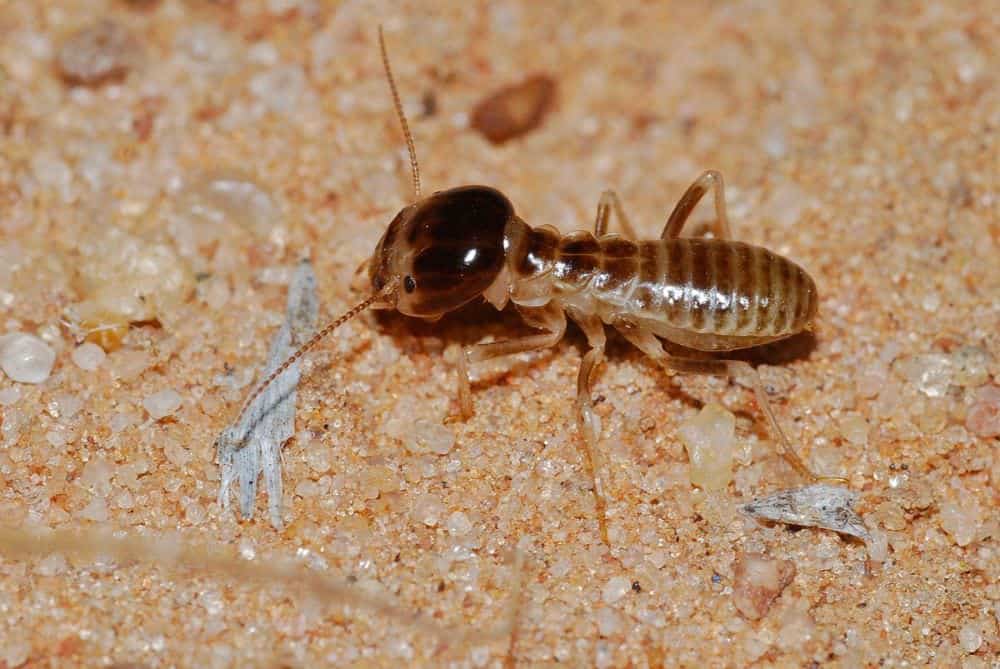
This caste of termite can be both male and female. Regardless of the termite’s sex, they are sterile and unable to reproduce. These termites are typically less than half an inch long. In certain colonies, there are two categories of worker—minor and major. Minor workers are slightly smaller than major workers.
Soldiers
Soldiers are the defenders of the colony. As with workers, they can be either sex and are also always sterile. A termite soldier is approximately the same size as a worker. However, soldiers belonging to the subterranean termite species are smaller than other termites, such as the drywood species.
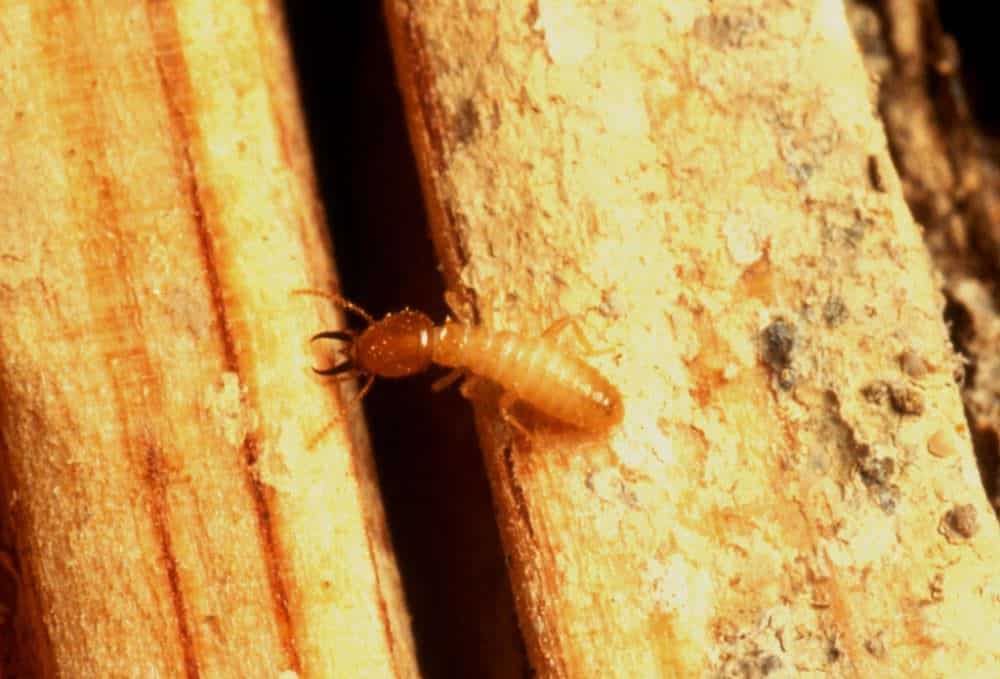
Neonetics
Neonetics are also known as secondary reproductives. This caste of termite can develop when the colony grows large and the secondary reproductives do not leave the nest. Instead, they can serve as a replacement if the king or queen dies.
These secondary reproductives are slightly larger than workers and soldiers. The Coptotermes genus contains the highest number of termite species. The average Coptotermes reproductive is between0.5 and 0.6 inches in length.
Alates
Alates are primary reproductives, less than an inch long, that are only produced in mature colonies. Each alate is a potential king or queen, and a swarm of winged alates leaves the colony periodically to reproduce.
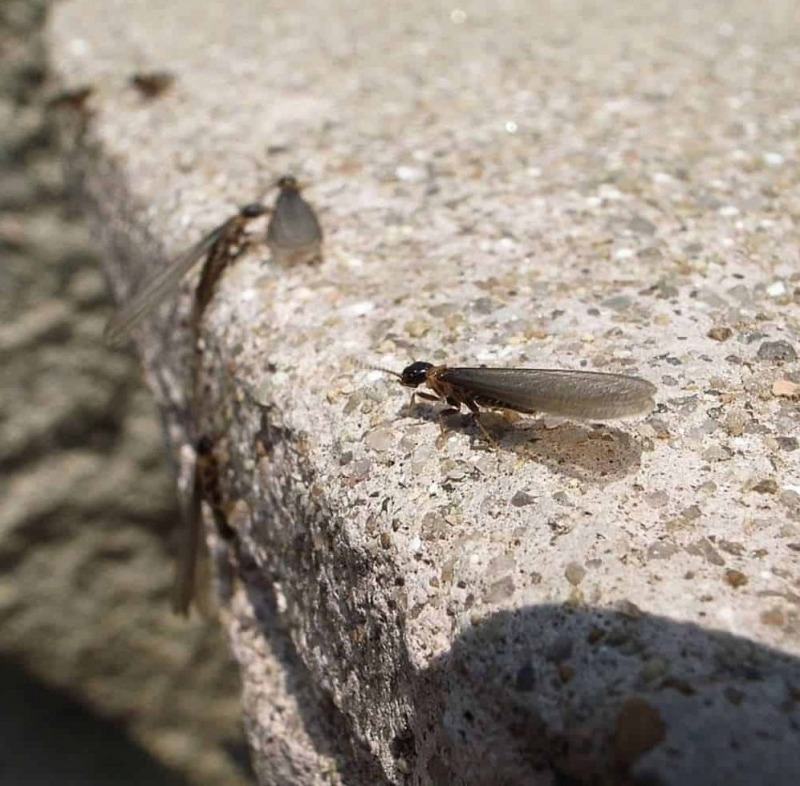
Their wings break off once they land and mate, and the surviving alates settle in suitable locations—finding new colonies of their own. Although hundreds of alates leave the colony, few are successful. The majority of alates are not able to find an appropriate location to start a new colony.
Kings
King termites are former alates, except they are wingless. They remain the same size throughout their lives, usually no larger than an inch long.
Queens
As with king termites, queen termites are also former alates. Unlike the kings, a queen termite will grow very large over time. The queen is the sole reproducer in a new colony. Initially, she lays small batches of eggs regularly.
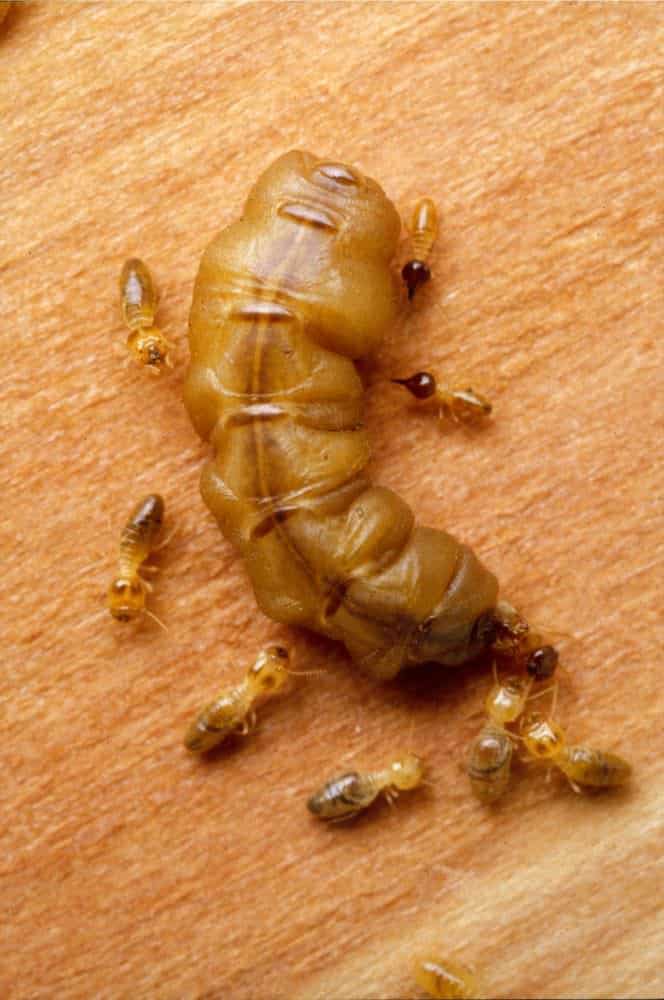
As time progresses, the queen’s ovaries continue to develop. Her abdomen distends to become capable of holding more eggs. After several years, queens of some termite species can lay over 30,000 eggs per day. A termite queen can be from one to four inches in length.
What Shape Are Termites?
Regardless of caste or age, all termites share some common features. Termites have thick waists and their abdomens extend directly away from their thorax (or upper body).
Termite antennae are straight, pointing away from the head. Termites possess six legs, three on each side. Except for size, the nymphs, larvae, and workers are all similar in appearance. The king is usually the same size and shape as an alate.
Other castes have distinguishable features that can help in identifying them. These change the overall shape and look of the termite and include the following:
Alates
Alates have fragile, translucent wings. The wings are pale in color and symmetrical. Termites in the Coptotermes genus have wings that are slightly hairy.
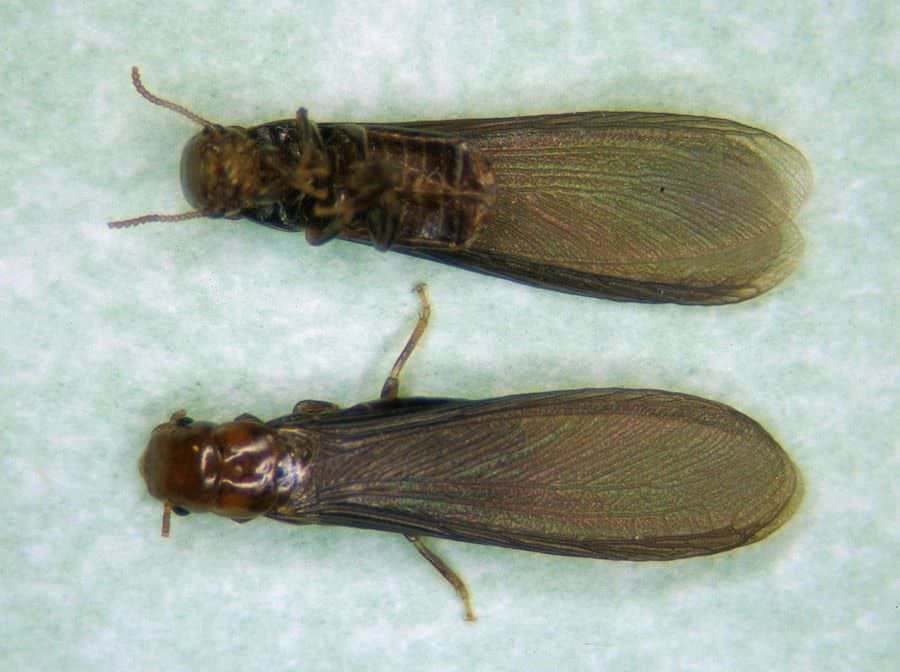
Soldiers
Depending on the species, soldier termites can have different defense mechanisms. For example, the jaw of a termite soldier is recognizable. They are two, pincer-type mandibles, structured along the termite’s mouth.
Soldiers that spray defensive chemicals do not have mandibles. Instead, they have a pointed nozzle (nasus) on their head, which they will use to spray a noxious substance from the nasus if threatened.
Coptotermes soldiers have round, smaller heads (pronutums). Soldiers from the Reticulitermes genus have rectangular heads.
Queens
A mature queen is not the same shape or size as a young one. As the queen’s abdomen grows larger, her shape will change. The upper body (thorax) of the queen remains the same size but her abdomen will appear quite bloated as it expands. It widens and lengthens, until it is so large that the queen cannot move easily.
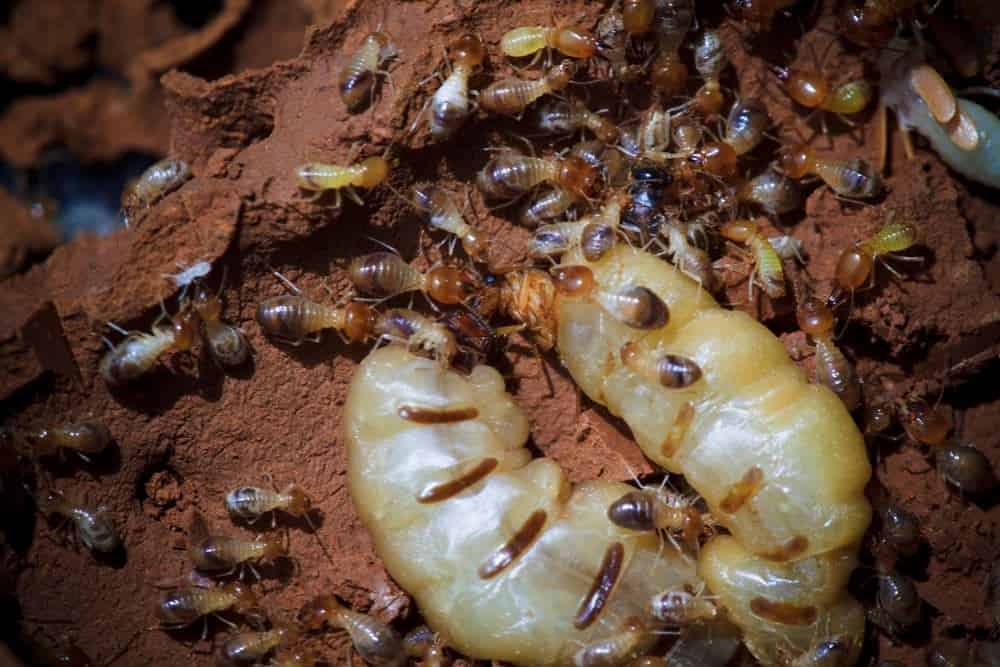
What Color Are Termites?
Termite larvae and nymphs are usually creamy white in color. The termites that live their whole lives within the colony are the same shade. The soldiers of some species can have dark colored heads and bodies. For example, Florida dampwood termite soldiers are reddish brown.
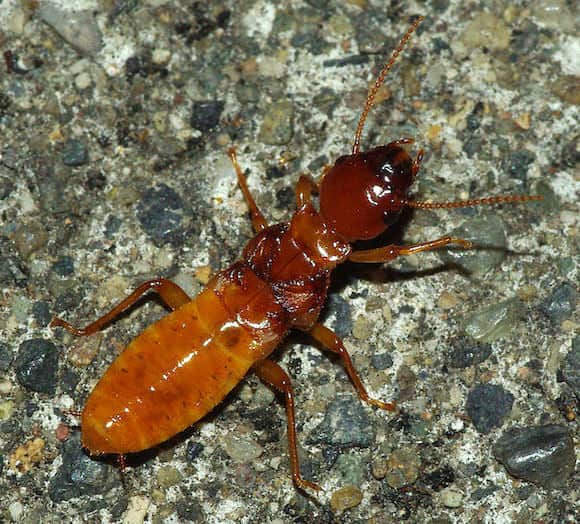
Reproductive alates can range in color from dark brown to golden brown. As kings and queens are former alates, they retain their colors.
The queen’s abdomen turns pale as it expands. As it stretches, the banded segments of her abdomen will become more visible and appear as if striped.
What Do Termite Eggs Look Like?
It is not likely that you will ever see a termite egg, as the queen lays all her eggs inside the royal chamber. Secondary reproductives in the colony will also deposit their eggs near the chamber. This is because it is the most protected area of the nest.
Termite eggs are tiny, but can still be seen without a microscope. They are typically an opaque white color. The size of the eggs can change as the colony matures. The queen’s initial batch of eggs is always larger than subsequent batches. As her egg laying capacity increases, egg size decreases.
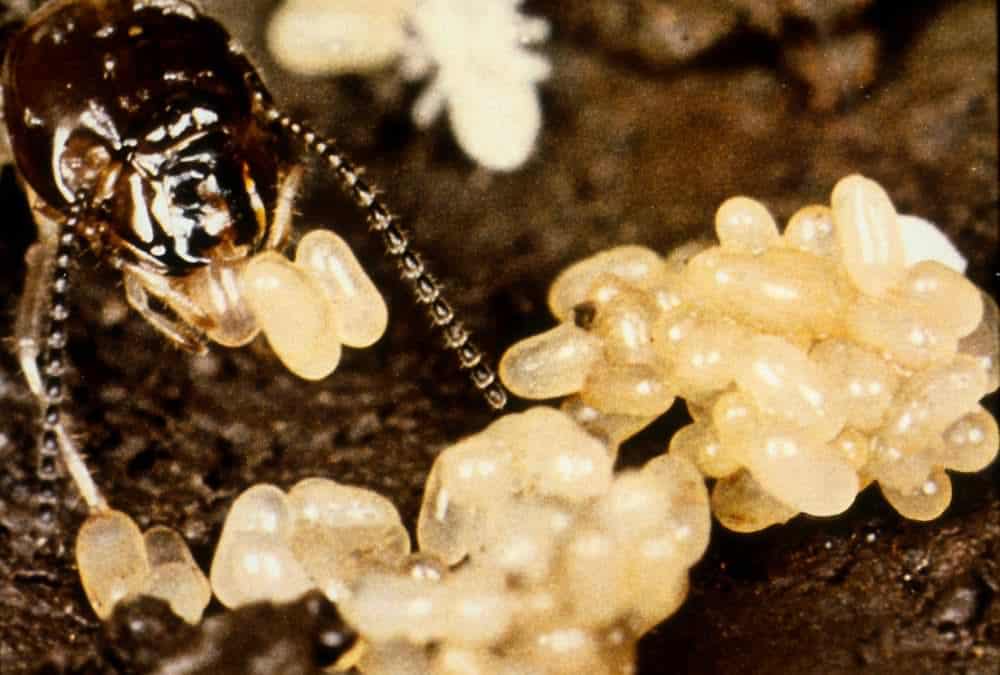
What Other Bugs Look Like Termites?
It is useful to know what other insects can resemble termites. If there are termites in your home, you want to know about it as soon as possible. You can also determine if the insect is a pest or harmless.
Booklice
For someone unfamiliar with termites, a booklouse can be mistakenly identified for a termite. These white, opaque insects vaguely resemble termite workers or nymphs.
Despite the name, booklice are not members of the same family as head lice, but they are approximately the same shape and size. At 0.1 inches, they are very small.
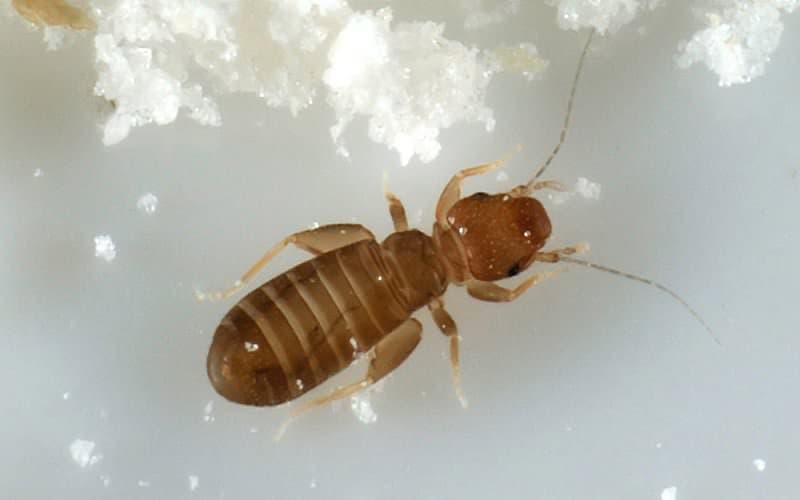
Booklice are attracted to humid climates, as they subsist off the mold. You can find them around your home, in furniture or by walls. If you spot one crawling out of a wooden wall or piece of furniture, you may think it is a termite.
A typical termite worker is larger than a booklouse. Keep in mind that young termites stay in the nest as they develop, so it is rare to spot a termite larva or even nymph foraging about. Booklice, however, are a sign that there is fungi or mold in your home. They cannot bite and do not carry disease, but they can still be a nuisance.
Ants
Ants of certain species are often mistaken for termites. Although these insects do have similar traits, they are not identical. Both termites and ants have six legs and can be comparable in size. As with termites, ants are social insects as well. They live in highly organized colonies and have caste systems, too.

Still, there are features that termites do not share with ants. The most obvious one is body shape. The majority of ants have a pinched, or very slim, waist, whereas termites have thick bodies. The antennae of ants are elbowed, or bent. Termite antennae are straight, regardless of caste. An ant also has a longer thorax than a termite.
Winged Ants
Winged ants are commonly confused for termite alates. When the termite alates leave the nest, they do so in a swarm. A termite swarm is often how people learn they have a termite infestation.
This is because the other termite castes prefer darkness and shelter. Termite alates tend to be attracted to light sources though. If your home is infested with termites, you will notice the alates attempting to escape through windows or doors.
Flying ants have similar behaviors. Swarms will leave the colony to reproduce and form new colonies. If ants have built a nest inside your home, the swarm can get trapped, just as alates can.
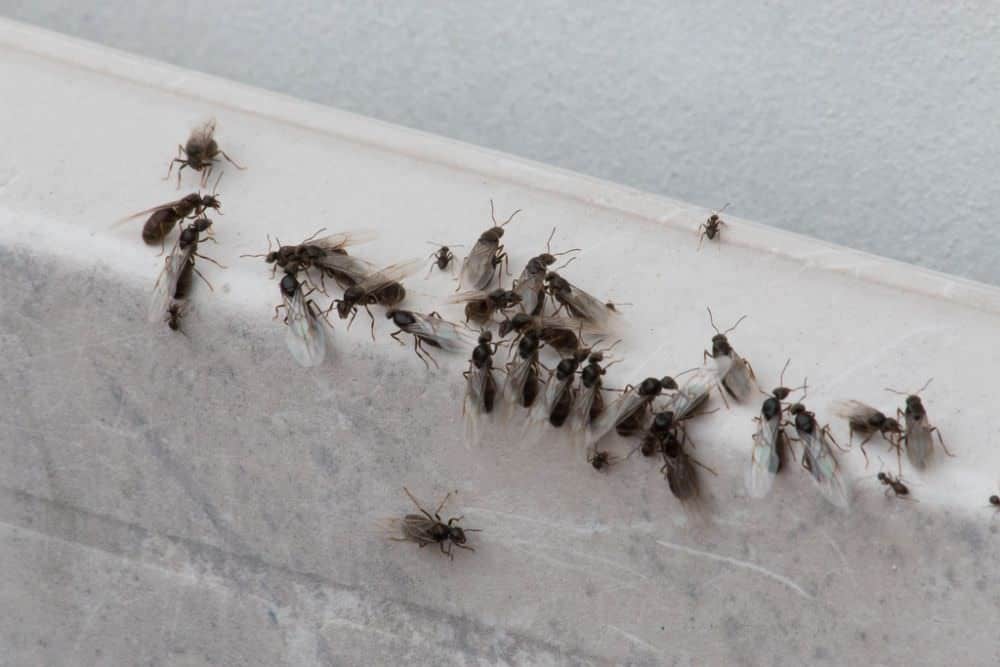
Ant wings are not symmetrical like termite wings. An ant’s front wings are longer than the back wings. Ant wings are also tinted brown rather than translucent. If a swarm of ants appears in your home, you may have an ant infestation. Contact a pest control professional or take steps to eradicate it.
Carpenter Ant
Carpenter ants reside in wood, using their large jaws to construct tunnels. They can settle into wooden buildings, just as termites can. However, they do not survive off wood, as termites do.
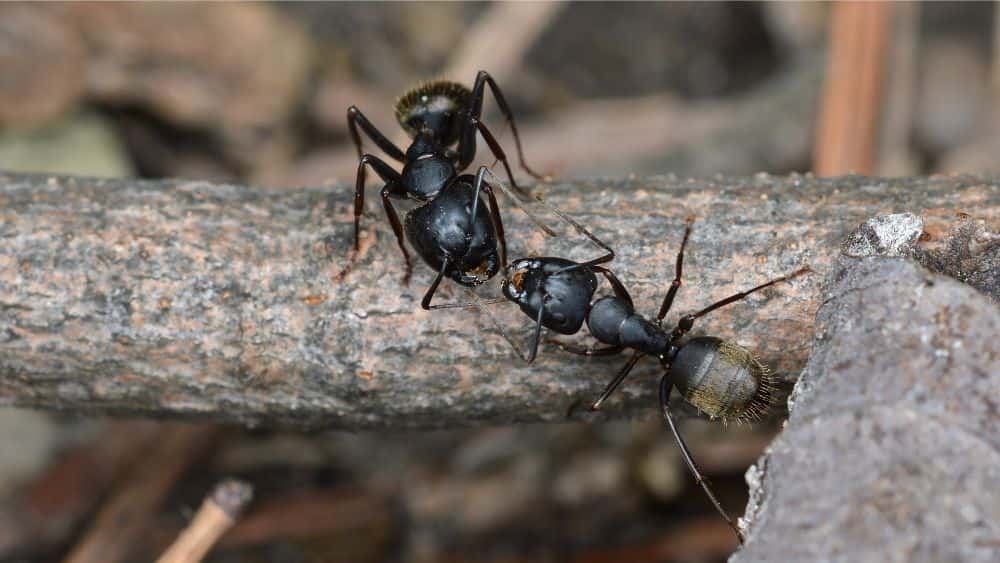
If you are not familiar with termites, it can be easy to make a mistake. You can examine the antennae and body shape, as mentioned above, to compare.
Acrobat Ants
Acrobat ants are not generally considered pests. They prefer to live in dead wood, such as decaying trees. As with some species of termites (e.g. drywood) they create nests inside the wooden structure.
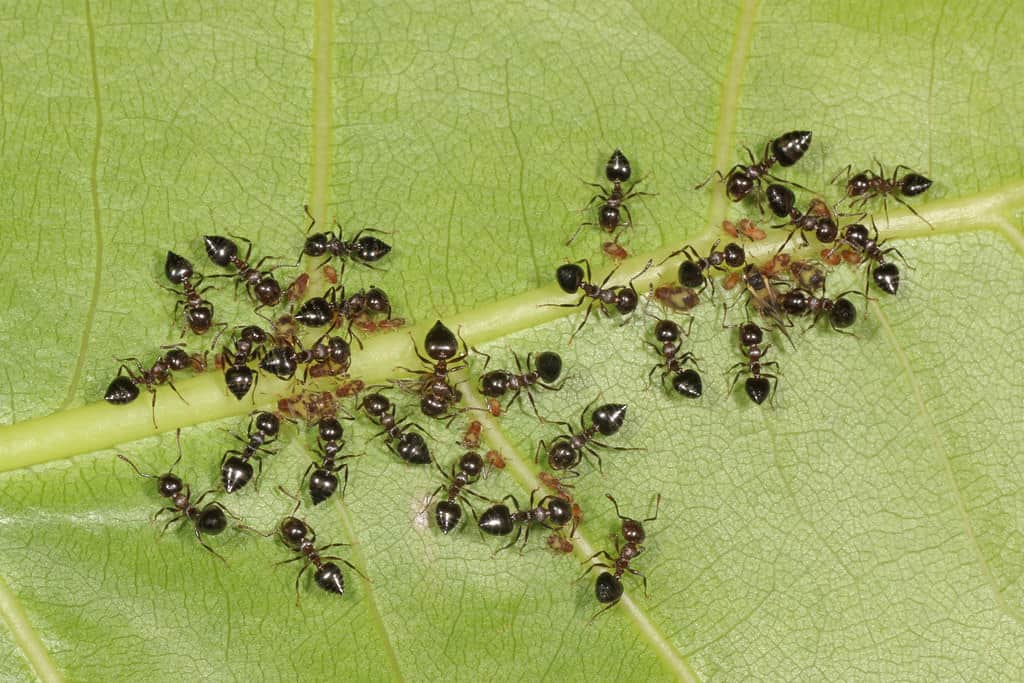
If you have rotting wood on your property, acrobat ants can target it. A rotting porch or shack can be an optimal environment for these ants. If you notice these ants inside wood, you may initially think you have a termite infestation.
Acrobat ants are far smaller than the majority of termites, however, they are around 0.07 inches long. These ants also have a very slender, long, pinched waist.
In color, they can range from dark black to reddish brown. Acrobat ants have reflective, shiny bodies. These ants also have distinctively pointed heads.
What to Do If You’re Unable to Identify a Possible Termite
The first step towards identifying a bug is to capture it, termites included. Smashing or squashing the bug will make identification difficult. Instead, you can use an empty transparent container to try and catch the insect without damaging it.
Once captured, you can examine the insect at leisure. Check the shape, color, and size for termite characteristics. If you prefer not to get too close, you can take a photo. Save it to review later or show to a pest control professional.
If you are still unsure, there are other options. There are a number of websites and tools online that assist with insect identification. For example, BugFinder or Know Your Insect. All you have to do is input the insect’s distinguishing traits. For example, the number of legs, size, and color.
Take note of where you spotted the potential termite for further investigation. Termites can be extremely destructive; therefore, if you come across any termite signs, or suspect a termite infestation, it is important to take action quickly.
Summary
Now you know how termites look at all stages of development. In the event that you see a possible termite on your property, you will are more likely to identify it correctly.
Other pests can be hastily mistaken for termites. You can use your termite identification skills to avoid unnecessary panic. If you cannot identify a possible termite, contact a professional pest control company.

